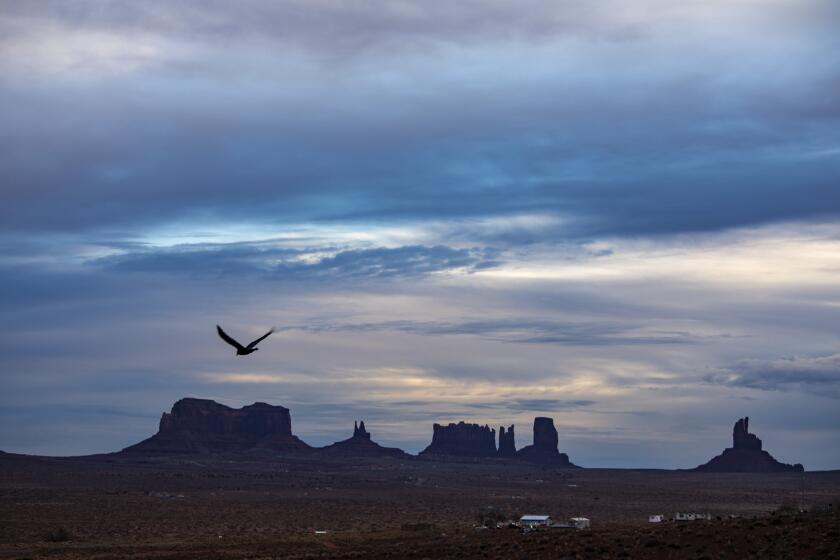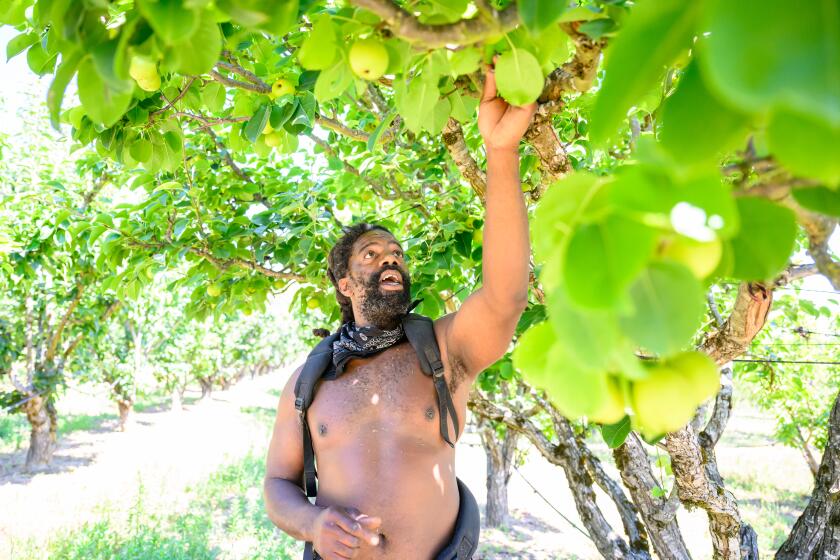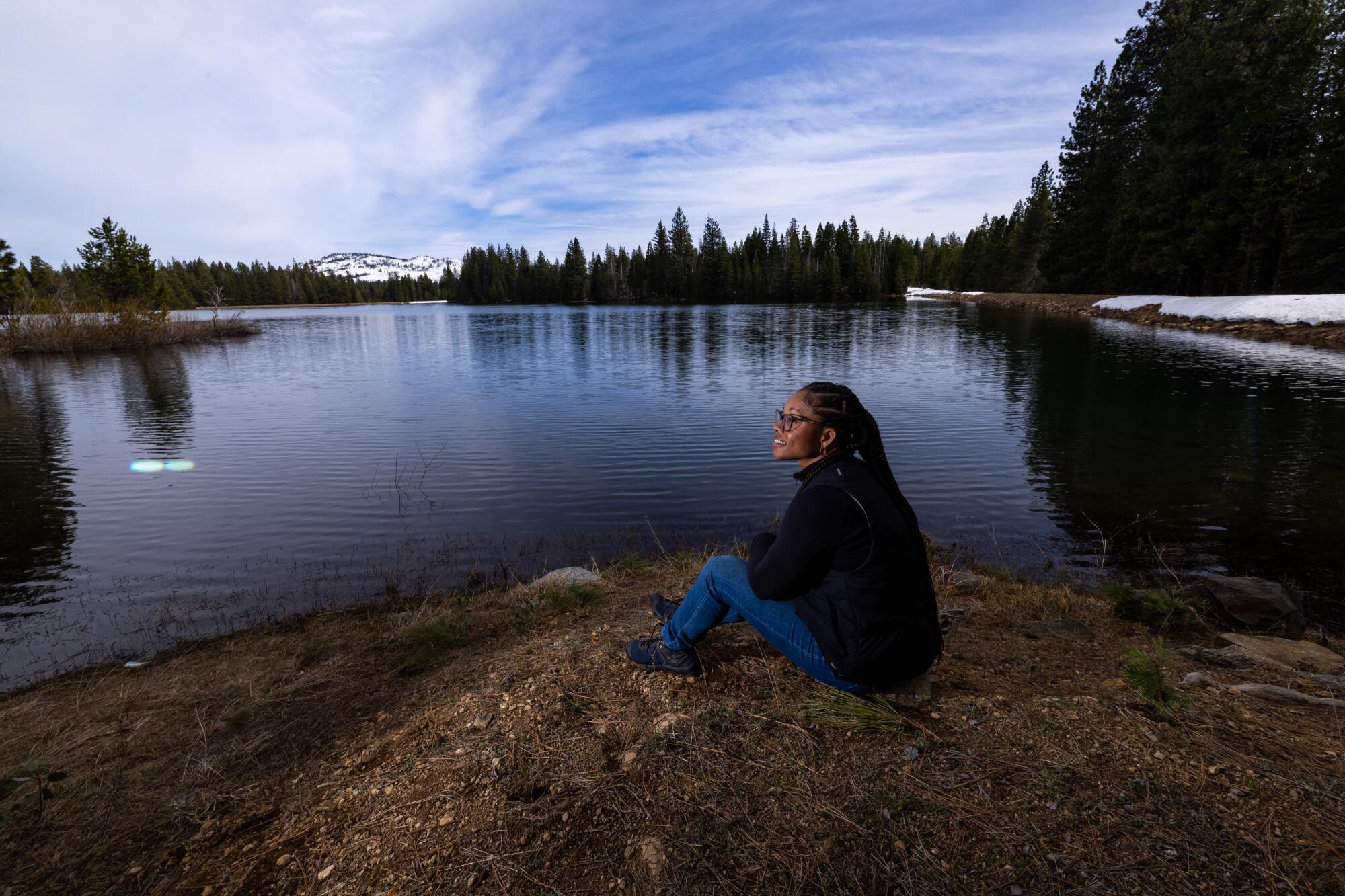
- Share via
EMIGRANT GAP, Calif. — Jade Stevens stands at the edge of a snowy cliff and takes in the jaw-dropping panorama of the Sierra.
Peaks reaching more than a mile high form the backdrop to Bear Valley, a kaleidoscope of green pastures mixed with ponderosa pines, firs, cedars and oak trees.
Stevens, 34, is well aware that some of her fellow Black Americans can’t picture themselves in places like this. Camping, hiking, mountain biking, snow sports, venturing to locales with wild animals in their names — those are things white people do.
As co-founder of the 40 Acre Conservation League, California’s first Black-led land conservancy, she’s determined to change that perception.
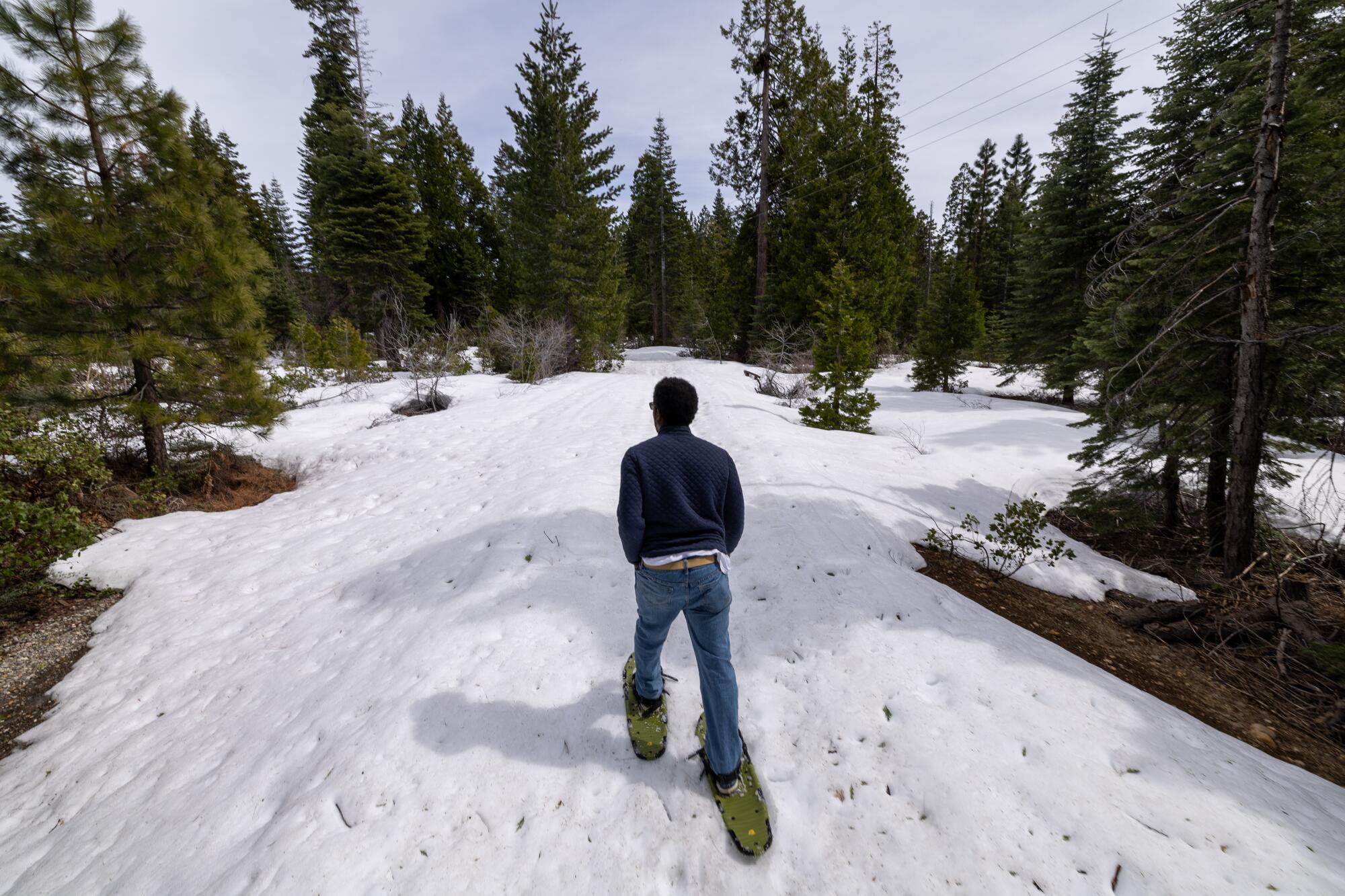
The nonprofit recently secured $3 million in funding from the state Wildlife Conservation Board and the nonprofit Sierra Nevada Conservancy to purchase 650 acres of a former logging forest north of Lake Tahoe. It will be a haven for experienced Black outdoor lovers and novices alike.
The land trust, almost by necessity, has both an environmental and a social mission, Stevens says as she leads a tour of the parcels straddling Interstate 80.
The most obvious goal for the property is to help the state reach a target of protecting 30% of its open space by 2030 — as part of Gov. Gavin Newsom’s overall climate and conservation initiative.
Given that Black Americans historically have not enjoyed equal access to national parks and wilderness recreation areas — and have often been deprived of the chance to steward large open spaces because of discriminatory land policies — the purchase carries immense cultural importance too.
The group’s name derives from Union Gen. William T. Sherman’s unfulfilled promise to grant some emancipated slaves “40 acres and a mule” to help them start over after the Civil War.
An avid cyclist, Stevens is part of a growing movement among environmentalists, outdoor enthusiasts and naturalists who believe that safeguarding the ecosystem, promoting wellness and confronting historical injustices go hand-in-hand.
Although surveys show that Black people care as much about climate change and protecting the environment as other Americans, these issues aren’t necessarily top of mind in a era when racial strife, police violence and economic inequities command more attention.
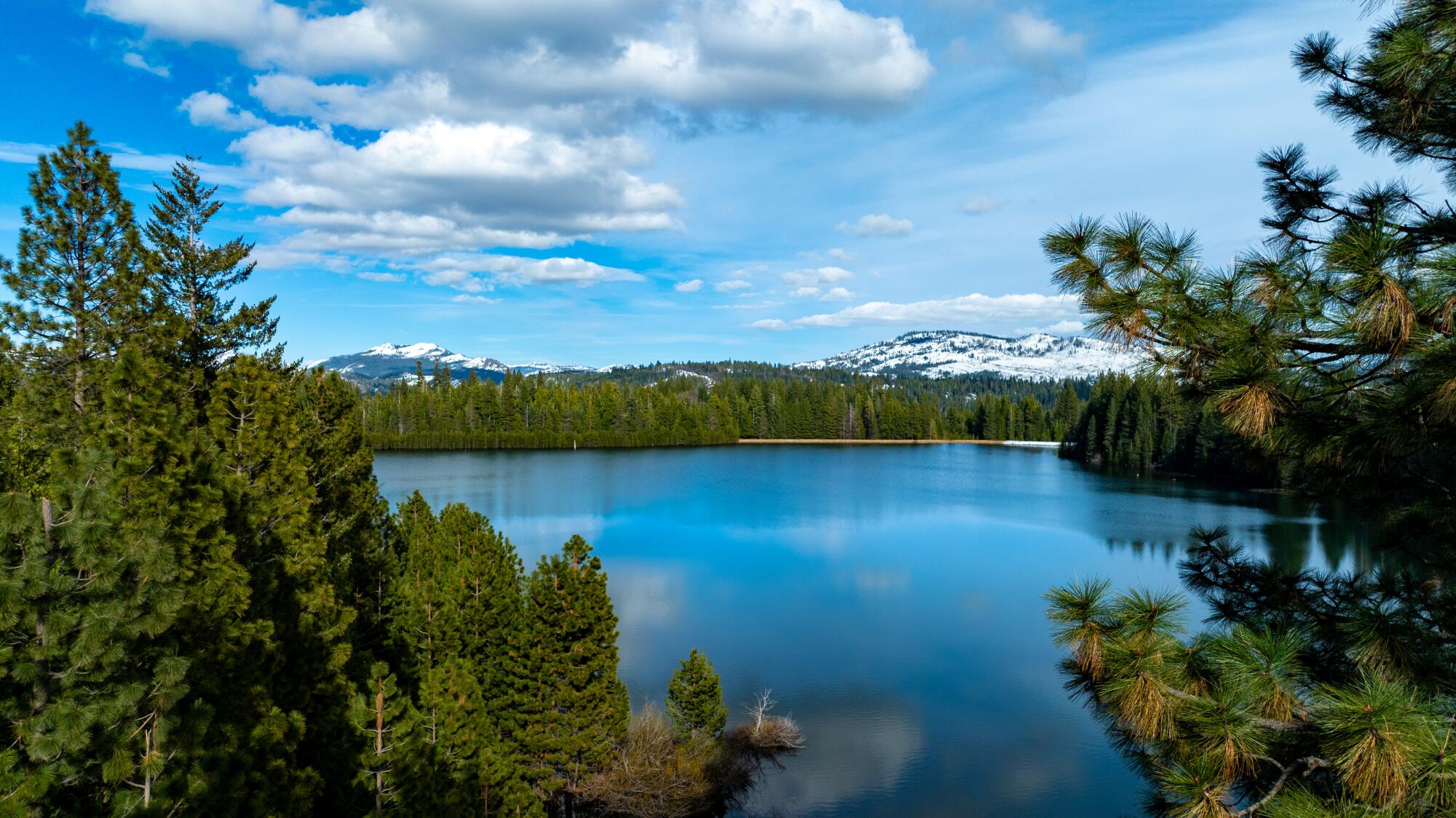
How can you heed the call of the wild when life in your own backyard presents so many challenges? Stevens, a marketing professor at Cal State Dominguez Hills who lives in a historically Black neighborhood in Los Angeles — 385 miles to the south — can appreciate why some might feel this way.
The 70-mile drive from Sacramento, the state capital, feels like a journey to another dimension, one where Black people make up only about 1% of the population.
A Trump 2024 sign greets you upon leaving Sacramento’s suburbs and entering Placer County. Winding past Gold Rush-era towns, forests and rocky outcroppings, the elevation soon rises to 3,000 feet, 4,000 feet and finally 5,000 feet.
Indigenous Californians want President Biden to establish a national monument in a stretch of desert that is both an ecological wonder and a window into their cultures.
At Emigrant Gap, Stevens sits at the edge of Lake Putt and smiles like a woman on top of the world. The lake is the main attraction among the conservancy’s parcels and it’s the body of water motorists see on the right as they head toward Nevada.
The water is so still you can see a perfect reflection of the snow-capped ridges.
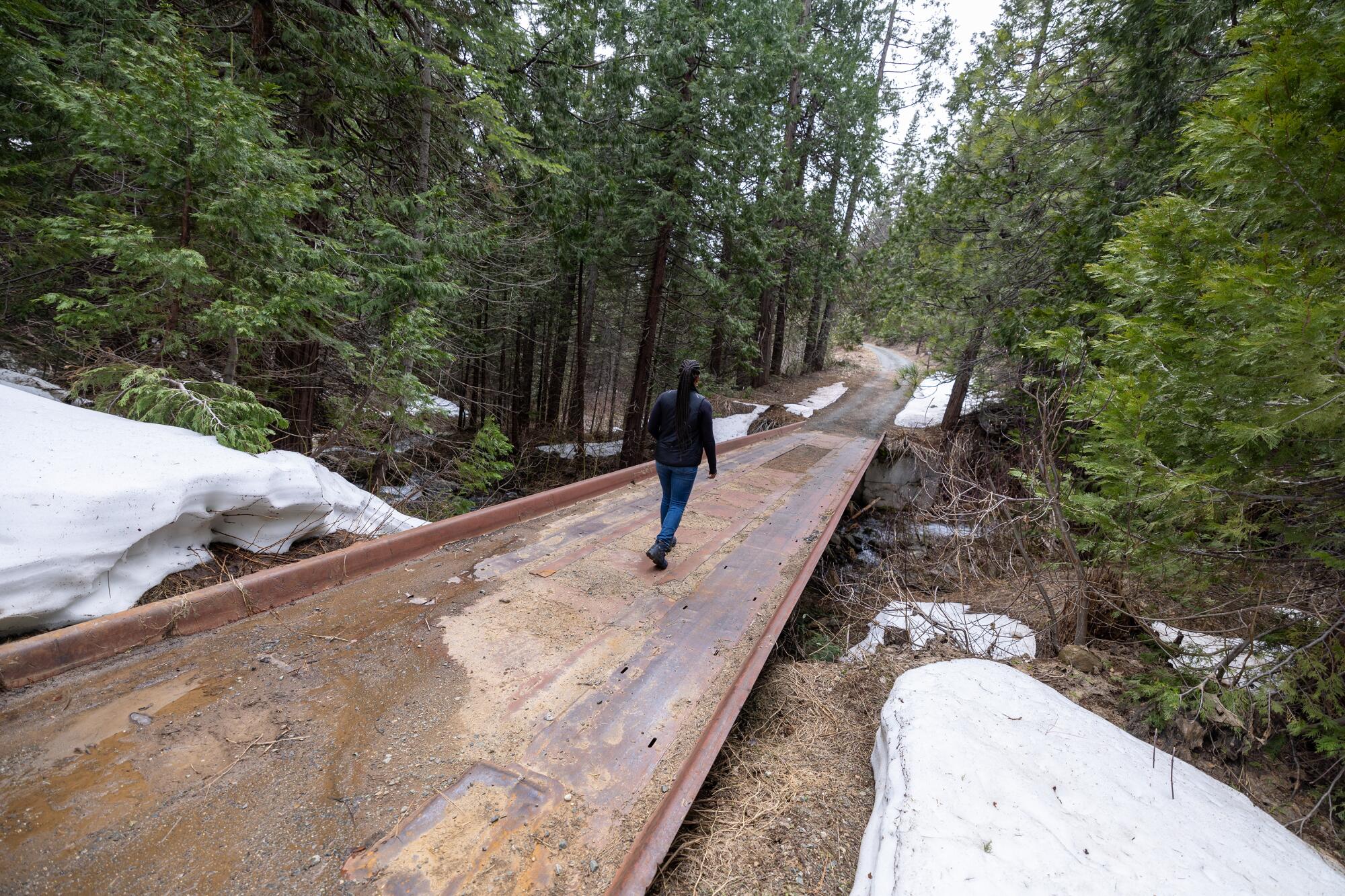
This is also an ideal spot for Stevens to envision all that the 40 Acre group wants to do on this land, from helping to protect species such as southern long-toed salamanders and foothill yellow-legged frogs to helping humans who don’t see themselves as nature or wildlife lovers develop a new appreciation for California’s fragile ecosystem.
“These plants, everything here, they all rely on each other,” she says. “I haven’t brought my family out here yet, but just from them seeing what I’m doing, it’s already sparking conversation.”
Trudging in snowshoes alongside Stevens is Darryl Lucien, an attorney for the 40 Acre group who has acted as a liaison between the nonprofit and officials in local and state government.
The land trust isn’t as disconnected from Black Californians as some might think, Lucien says.
Next to the lake, a spillway flows into a stream that the Department of Water Resources refers to as Blue Canyon Creek.
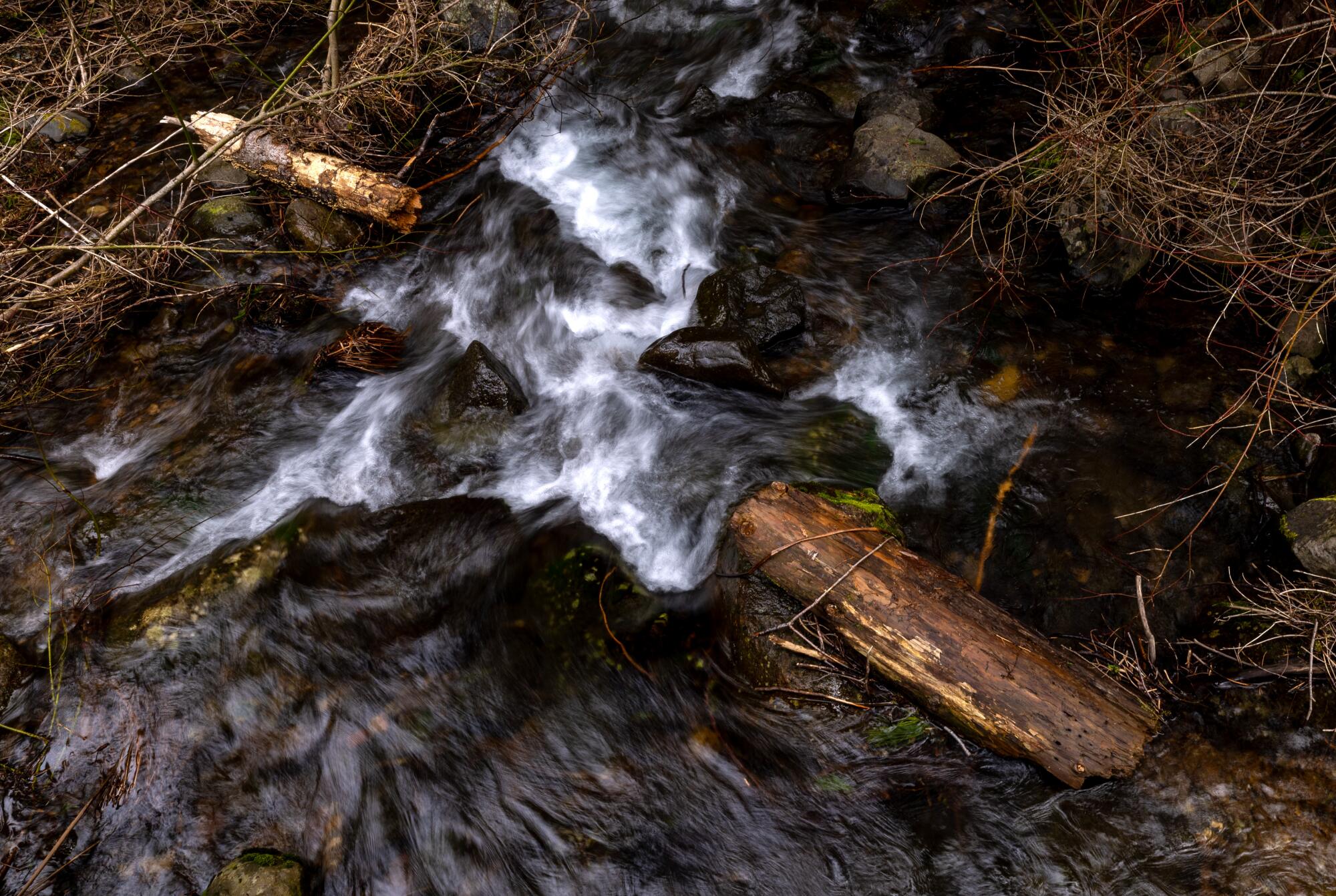
Waters from Blue Canyon Creek eventually flow into the North Fork of the American River, then the Sacramento River, and then the California delta, where some flows will be channeled into the State Water Project, “which eventually finds its way down to Los Angeles,” Lucien says.
A look of racial pride washes over Lucien, 38, when he contemplates the possibility that these waters might reach the homes of Black Angelenos.
“Little do they know their water starts on Black land,” he says. “You’re standing at the source, baby.”
It has been less than a year since state Assemblymember Mike Gipson, a Democrat from South L.A. County and an early champion of the nonprofit, presented the group with a check to purchase the land. The planned habitat restoration will take time, but Stevens already has other big ideas.
More than a third of the Navajo Nation lacks running water. As the tribe nears a pact with Arizona over water rights, a California nonprofit looks to help.
Gazing across the lake to the southern shore, Stevens sees a location for a nature center that can hold environmental education classes and double as a rentable lodge for gatherings.
She daydreams about installing a pier for fishing, lookout points along the shore and adult treehouses for glamping among conifers so tall they don’t fit in a camera’s viewfinder.
Just beyond the southern shore there are old timber-company clearings which could someday be converted into trails that hikers can use to reach the adjacent Tahoe National Forest.
“This is an area where a lot of community building will take place,” Stevens says. “We’re hoping that everyone finds at least one thing that makes them feel welcome on this property.”
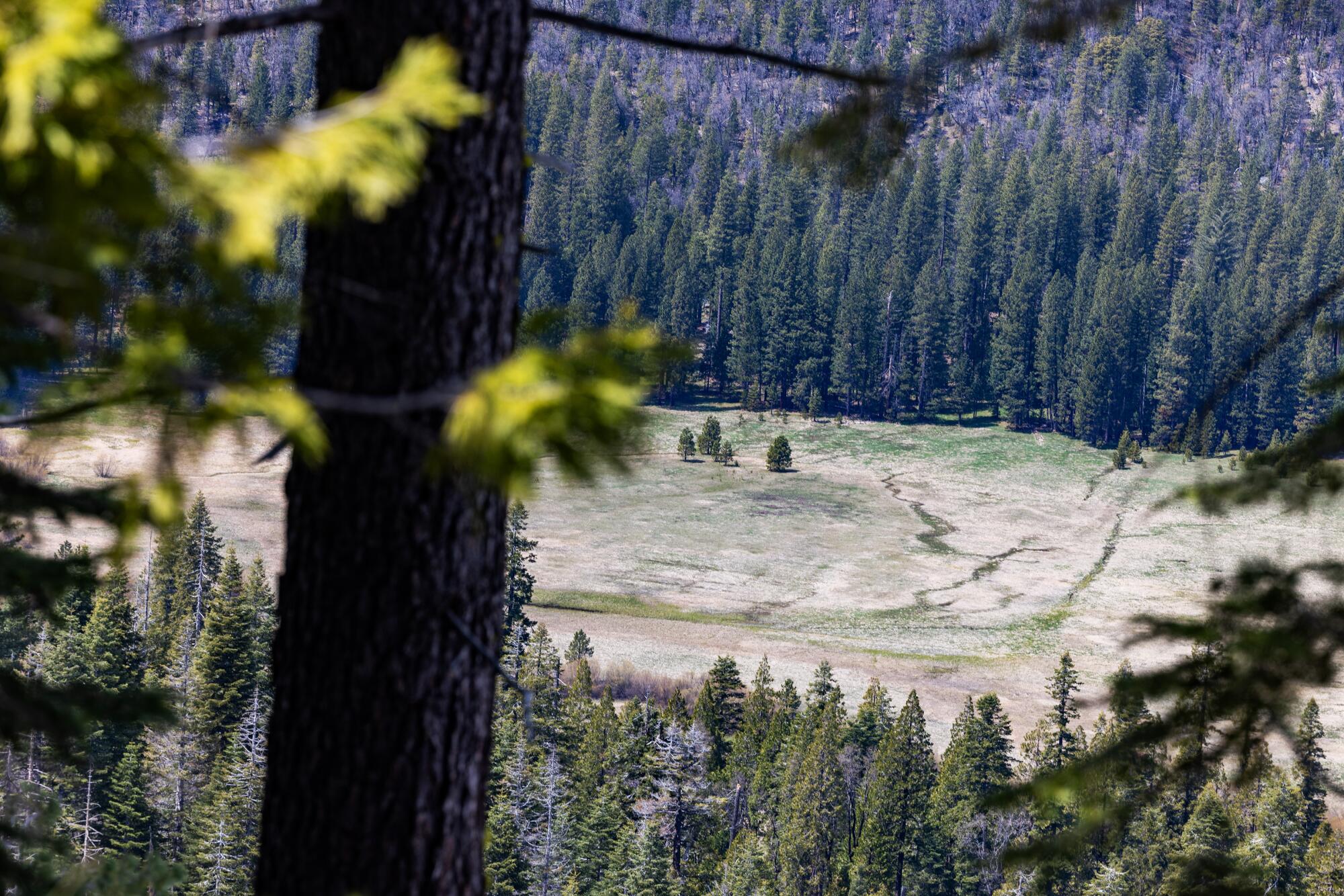
“Welcome” is not a word that has historically greeted Black people in the nation’s rural spaces and wilderness parks, says KangJae “Jerry” Lee, a social and environmental justice researcher and assistant professor in the University of Utah’s Department of Parks, Recreation and Tourism.
Lee notes the irony that most Black Americans descend from enslaved Africans who were stolen from their homelands specifically for their expertise in land stewardship and farming. Engaging with the outdoors was anything but a foreign concept.
“Some of them had better skill sets than the European colonists,” Lee says.
Black people built whole towns in the Great Plains and the West — including Allensworth, in Tulare County — though many were overrun by white mobs, seized or suffered decline due to a lack of equal access to resources such as water.
Some of the first rangers stationed at Yosemite and Sequoia national parks were Black, yet the reality is that the national park system was originally designed as way for white visitors to enjoy nature’s splendor, Lee says.
In response, Black-owned resorts catering to an African American clientele sprang up in the early 20th century — including in Val Verde, a “black Palm Springs” an hour’s drive north of Los Angeles; at Lake Elsinore near Riverside; and at Manhattan Beach.
The parks ostensibly welcome all today, but studies show that Black Americans are among the least likely of any racial group to visit them.
“Black people inherently had a deep, deep connection to the land,” Lee says.”That relationship has been severed over centuries.”
Stevens reflects on this painful history as she talks about the group’s plan to acquire other lands throughout California, including open spaces closer to L.A.
Inspired by Octavia Butler’s Afrofuturist fiction, a Sonoma County farmer helps Black Californians connect with nature and learn lessons in climate resilience.
Recreation and conservation aren’t the only imperatives at Emigrant Gap.
Stevens pulls out a copy of a handwritten letter she received from a Black man from L.A. who is an inmate at San Quentin. He saw a TV report about the land purchase and felt inspired by its mission. He writes about how exposure to nature and recreation can help steer Black and brown teens away from gangs and violence, and out of the criminal justice system. Stevens agrees.
The property will be a small-business incubator too. The nonprofit intends to help Black and brown entrepreneurs develop sustainable, outdoor-oriented ventures such as hiking excursions — fostering generational wealth in the process.
“How we get back to this truth of appreciating nature, being connected to the outdoors, is our story to tell,” Stevens says.
One local ally wants to help the group shift the narrative around Black people and nature — Cindy Gustafson, who sits on the Placer County Board of Supervisors.
Gustafson also serves on the Sierra Nevada Conservancy, which awarded the league $750,000 to help purchase the land.
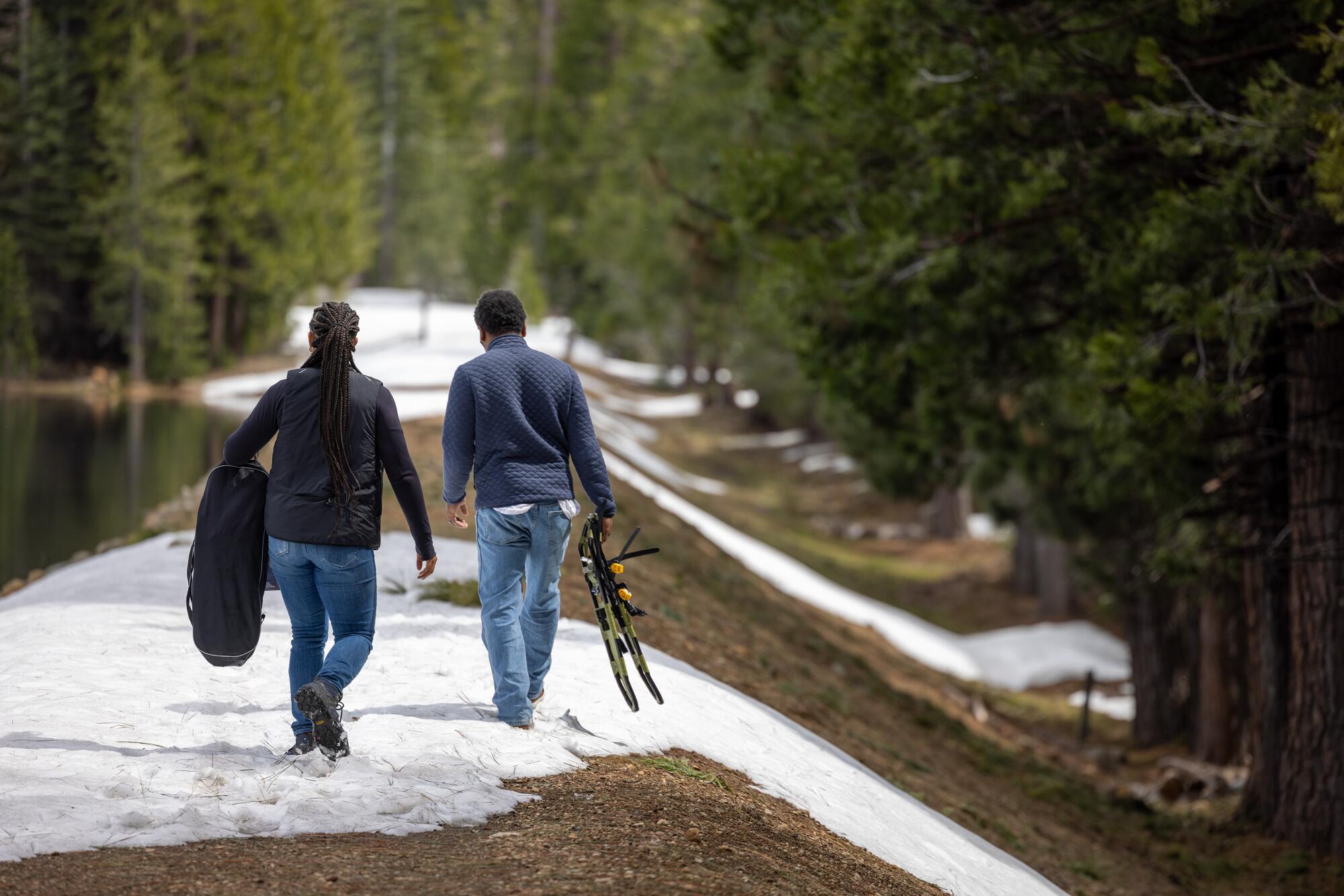
Gustafson, who is white, appreciates the league’s desire to help Northern Californians manage forested lands, which have been devastated in recent years by deadly and costly wildfires. Fires have grown more and more severe due to rising global temperatures, posing a greater risk to flora, fauna and residents in cities and rural areas alike.
“Many of us haven’t had the experiences or the background to understand the nature of these forests and how important they are to our climate, our environment,” Gustafson says. “Having new stewards is really important, as is diversity. It’s a sign of hope for me in these divisive times. ... Taking care of this land takes us all.”
Stevens seems undaunted by the challenge of persuading reluctant Black Californians to view Emigrant Gap as a setting where they can celebrate their culture while learning about the ecosystem.
Her pitch is a simple one:
“Here,” Stevens says, “you’re safe.”

